Native Advertising Part 1: What Is It and Why Should I Care?
There’s a lot of buzz about native advertising in the marketing and media universe. But for all of the talk, it seems few people really know what native advertising is.
Results from Copyblogger’s 2014 State of Native Advertising Report confirm this, finding that only 3 percent of respondents had a working knowledge of the practice.
So let’s bring clarity to the conversation, starting with a working definition.
Native advertising is a type of content-driven advertising—in print or online—that matches the form and function of the platform on which it appears. It can be a sponsored video, article, infographic or even a promoted search result. It’s “native” because it looks like it belongs with the rest of the content in a given publication or on a website.
Some of the most well known examples of native advertising can be seen on BuzzFeed, a social media-driven news site that posts traditional editorial alongside sponsored content, typically in the form of Top 10-type lists. A “Promoted By” logo clearly identifies the advertising pieces, but the content is otherwise written and displayed just like the other articles. Copyblogger also offers some great examples of native advertising and why they work.
Unlike banner ads and other traditional forms of advertising, native ads elicit a more indirect response from the audience. This is similar to how editorial content functions as part of brand building and awareness; impact is measured by reach and engagement versus a direct response of buying something or entering contact information.
But while it may be harder to measure direct impact with native advertising, it still offers an advantage among public relations strategies in its ability to garner meaningful metrics, including clicks and visits.
For a greater understanding of native advertising, we look to the Interactive Advertising Bureau (IAB), which sets guidelines for advertising in digital media and has devoted a fair amount of time to creating standards this next frontier. The IAB’s “Native Advertising Playbook,” identifies six common ad units deployed as native advertising:
-
In-feed ads. In-feed ads appear in a publisher’s content well and are designed to match surrounding editorial content. The ads are typically written by or in collaboration with the publisher. In some cases, the content can be viewed without having to leave the page. In other instances, the content either links to a page within the site or to content off the site. Commonly used disclosers include, “sponsored content,” “suggested post,” “advertisement, “sponsored by” and “promoted by.”
-
Search ads. These native ads are presented in a format and layout that fits with organic search engine results. For example, search ads most commonly appear above organic search results. But aside from displaying the word “ad” next to the listing, they look exactly like the surrounding results.
-
Recommendation widgets. With these native ads, a link to content is delivered by a widget. It typically integrates into the main well of a web page but does not mimic the appearance of the editorial content feed. Outbrain is a well-known recommendation widget that feeds links on popular new sites such as CNN. Disclosers include, “You may like” or “Recommended for you.” Even highly respected publishers such as the New York Times use Outbrain widgets to promote blog content on other sites.
-
Promoted listings. These are ad units not commonly found on sites with traditional editorial, but are still designed to fit seamlessly into the user experience. Look closely at the first search results to see an example of promoted listings on Etsy. Aside from the subtle addition of the word “ad,” the promoted listing looks exactly the same as the organic listings that appear in a specified search.
-
IAB standard ads. These are traditional ads placed outside the editorial well but contain contextually relevant native elements within the ad that links to an off-site page.
-
Custom. These are essentially custom native ads that a client and publisher develop in collaboration. An example would be Genetic Engineering & Biotechnology News’ (GEN) native advertising program, Bioperspectives.
In a media landscape that’s clearly in transition, native advertising fills a need for content and revenue at publications in the life science industry and beyond. It’s important for communicators in the life science industry to be aware of the trends and understand whether it’s an opportunity they’d like to explore.
Next in this three-part series, we will explore why native advertising is causing so much debate. Then we’ll hear from digital marketing guru Bill Levine of GEN on how native advertising, when done right, can add value to marketing efforts.
